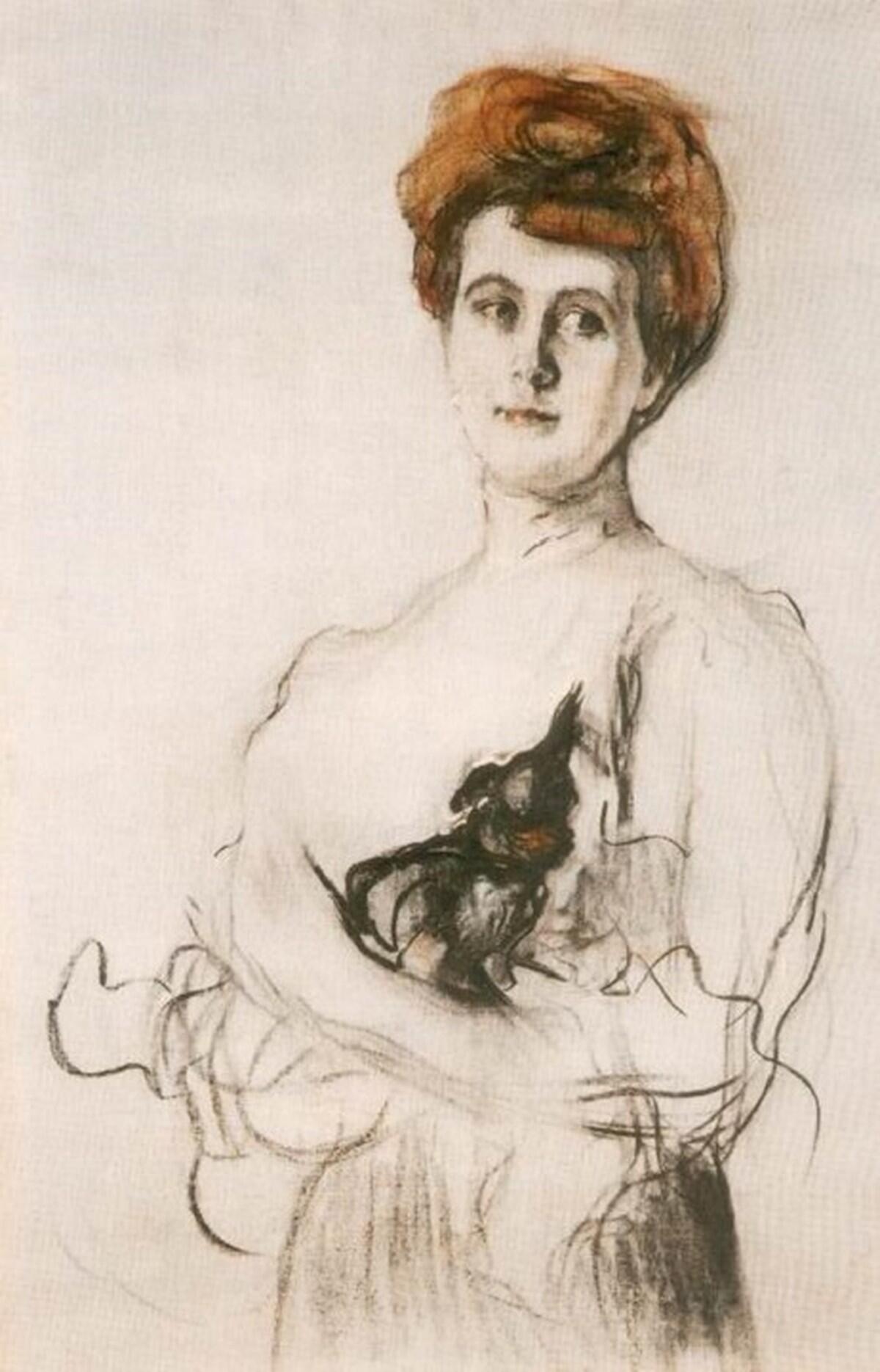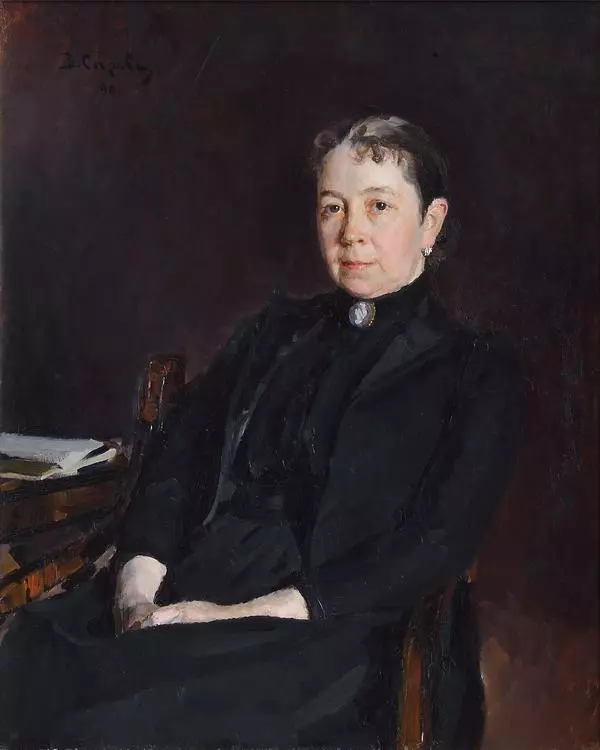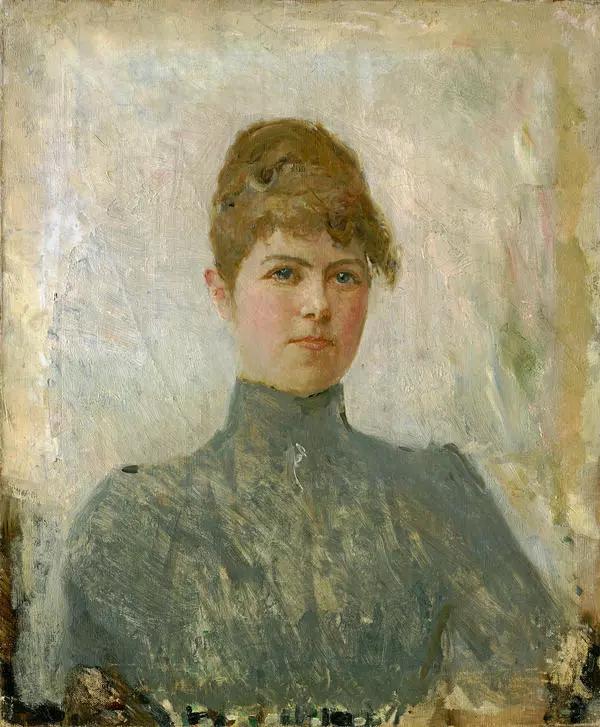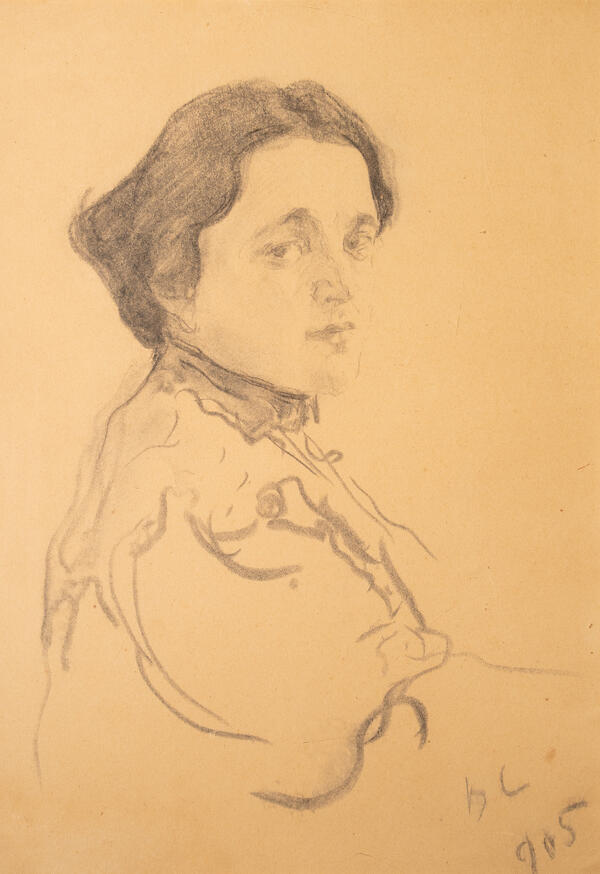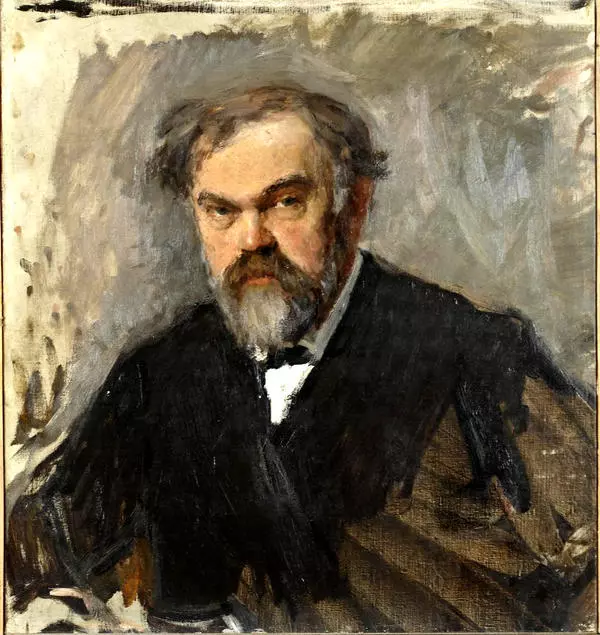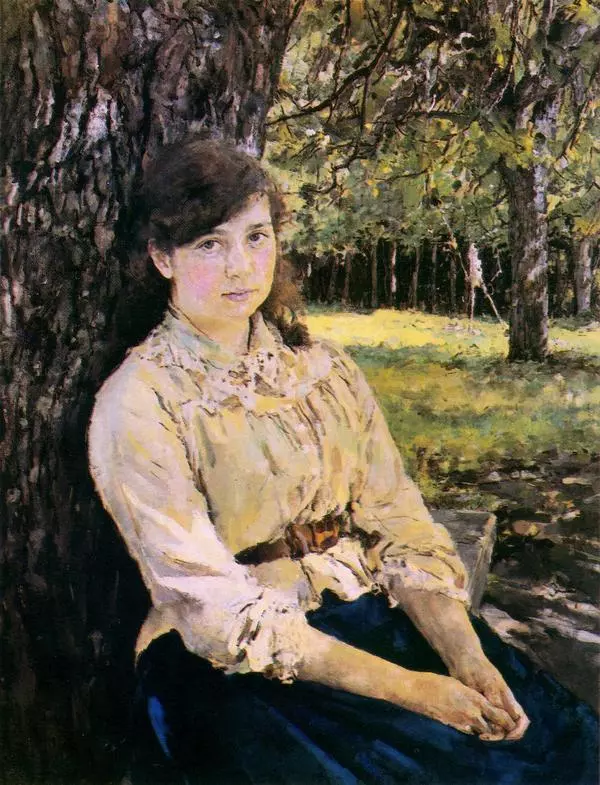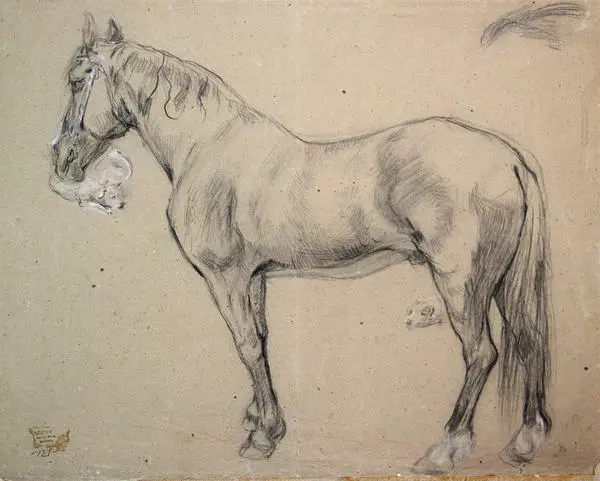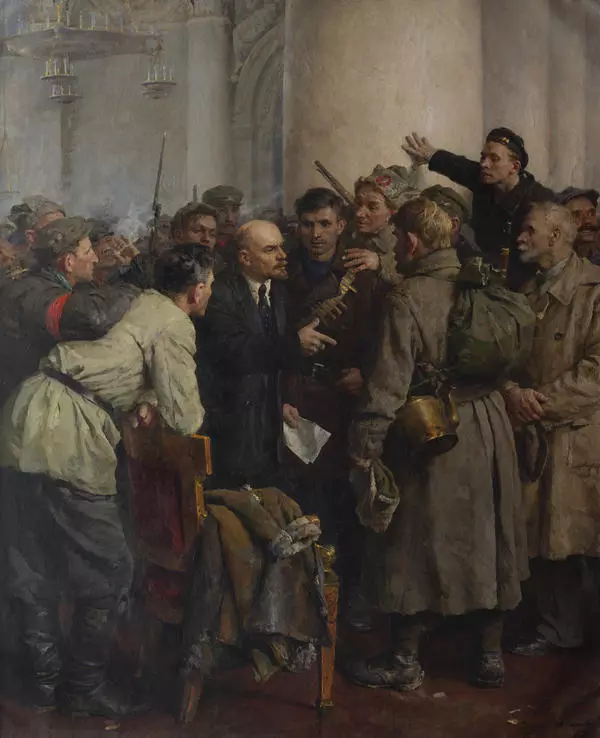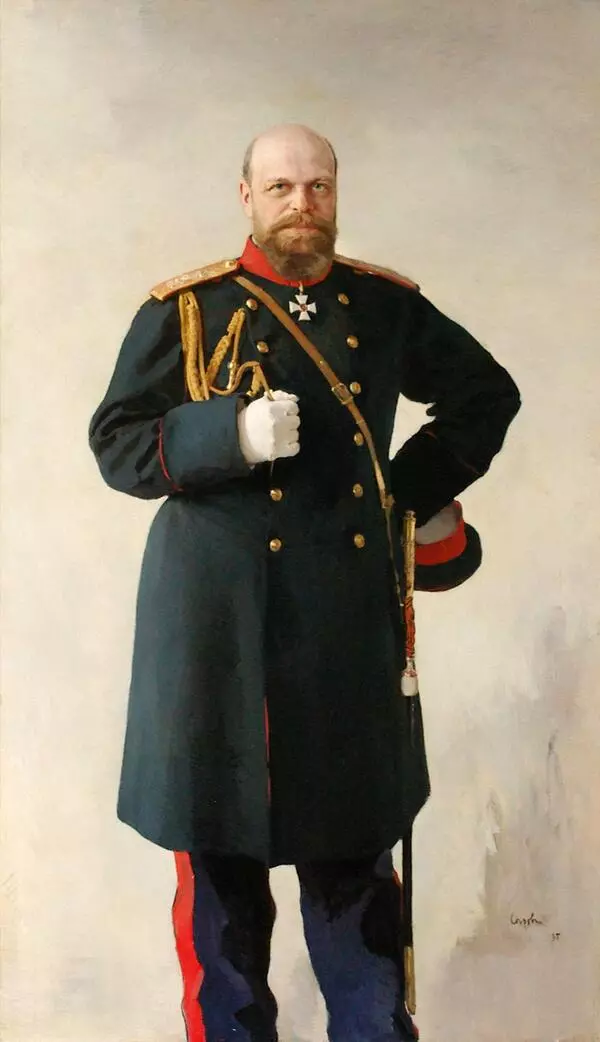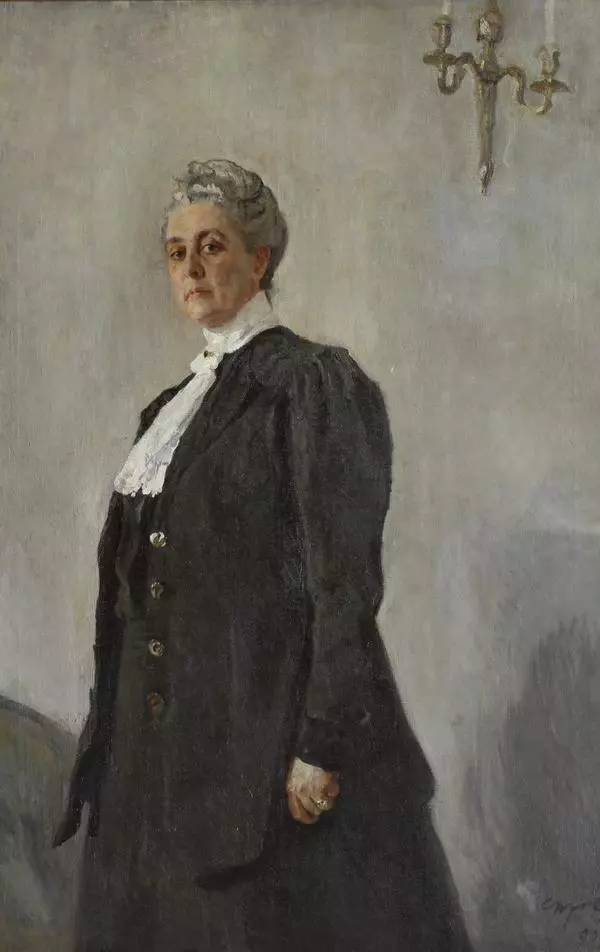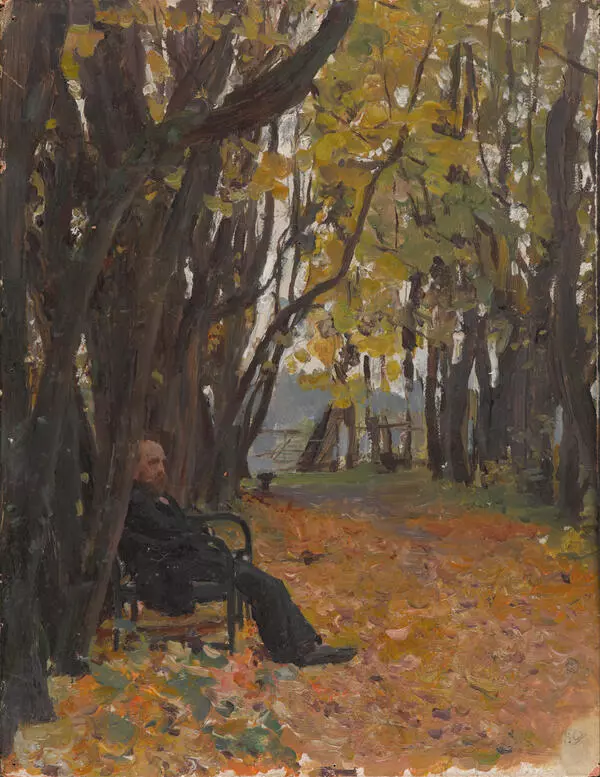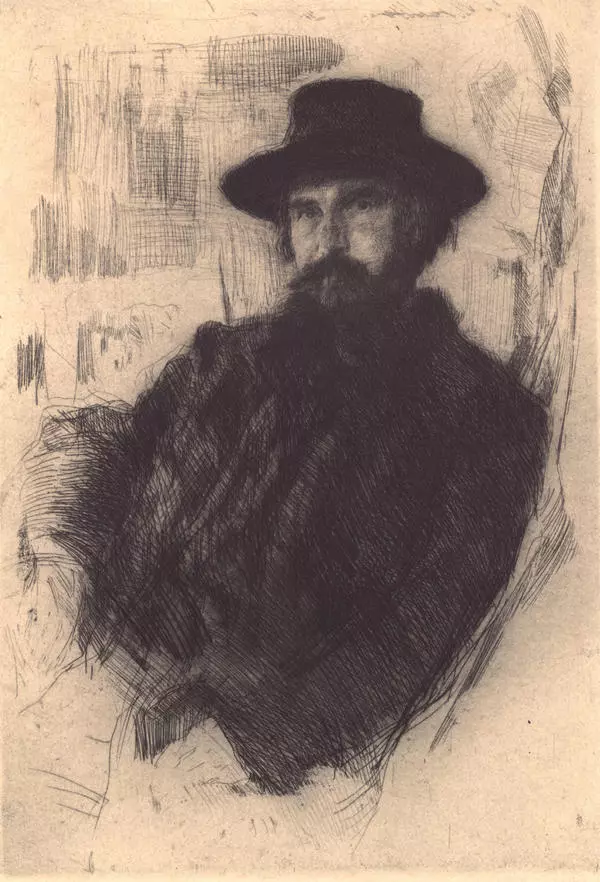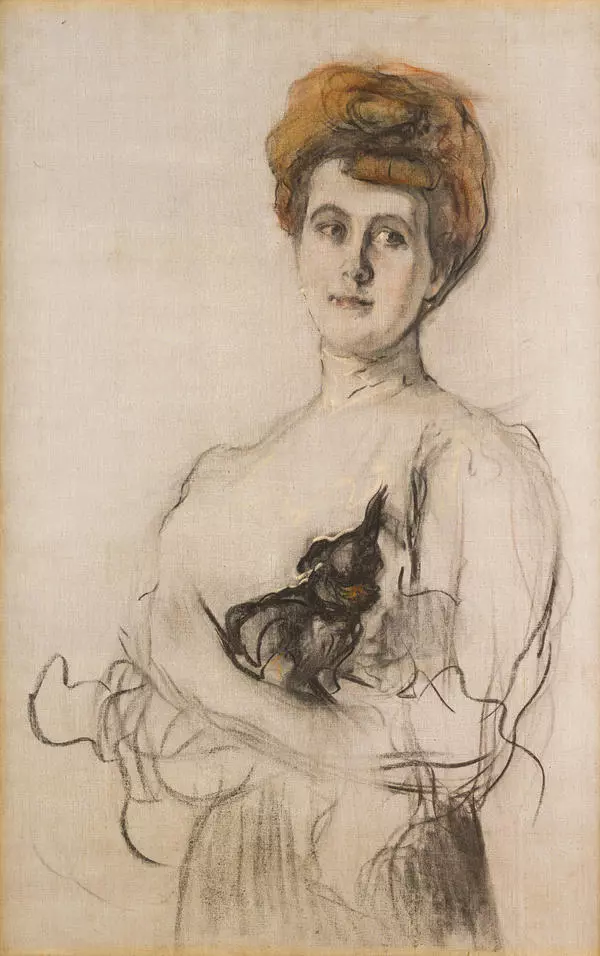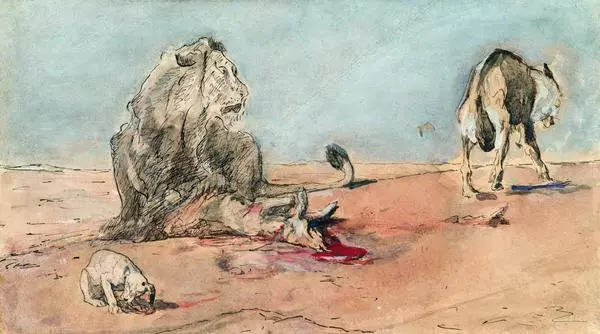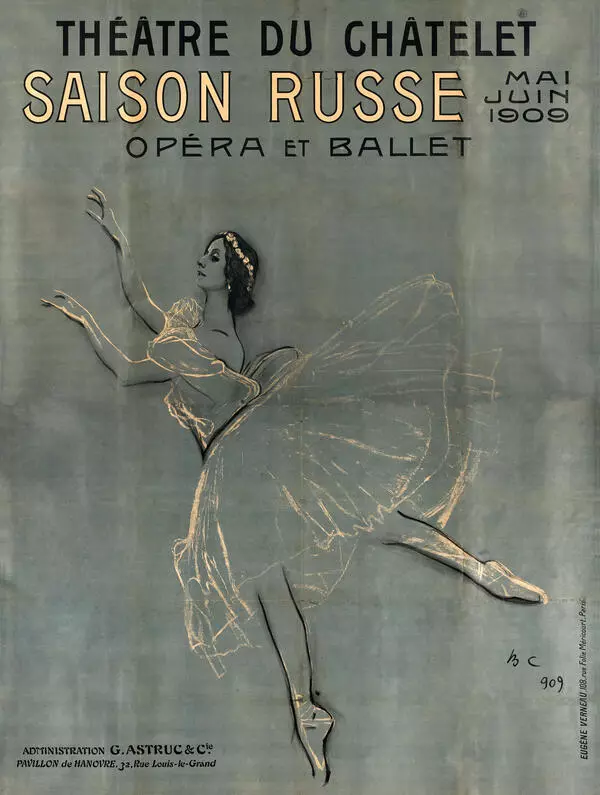The courage of creative experiments was a distinctive feature of the painting at the turn of 19th-20th centuries. At that time, interest in classical traditions was also revived. General attention to the culture of the 18th century was attracted by the ‘Historical and Art Exhibition of Russian Portraits’, which took place in 1905 in the chambers of the Tauride Palace. There was a collection of more than two thousand portraits created during two centuries, including works by Fyodor Rokotov, Dmitry Levitsky and Vladimir Borovikovsky, almost forgotten at that time. That particular exhibition was unprecedented in the history of Russian art, and had a tremendous impact on the work of many artists of the time.
Precisely from 1905, in the portraits of Valentin Serov (January 19, 1865, St. Petersburg - December 5, 1911, Moscow) characteristics typical of the Rococo era: oval, circle, and octagonal formats started appearing. The painting techniques he used echoed those of the old masters. The first response to the artist’s impressions of the famous exhibition was the portrait of Elizaveta Karzinkina. The artist’s contemporaries gave contradictory comments on this stylistic experiment of Serov, finding in it a clear adherence to the traditions of 18th century painting. In the spring of 1906, at the exhibition of the Russian Artists’ Union, the portrait became “one of the most interesting parts in the exhibition.” At the same time, opposite opinions were expressed – that the manner of the portrait was called “tired”, the painting was “cute”, and the experience of stylization was “unsuccessful”.
Serov, usually strict with his work, this time protested against the ostracism that his new work was subjected to. The portrait can indeed be called perhaps the best stylistic retrospection in the artist’s work. Direct associations with portraits of the 17th century evoke both the oval format and the flowing contours of the figure. A dark deep background, a woman appearing from the twilight, a three-quarter turn, a soft half-smile of her lips — perhaps these characteristics are enough to recall the images of beautiful mysterious strangers of Fyodor Rokotov.
Nevertheless the beautiful woman looking at us from the portrait is by no means a ghost of past centuries, inspired by the memory of old canvases. Serov painted a commissioned portrait following all rules of secular etiquette. He depicted the wife of a major Moscow businessman and philanthropist Mikhail Karzinkin, Elizaveta Karzinkina, a former member of the Moscow Imperial Theaters ballet company.
With a slight turn, he emphasizes the grace of the model, and with a lively look and a smile he highlights the artistic expressiveness of her face. When looking at a dog sitting comfortably in the hands of the woman, the viewer is drawn to the eloquent plasticity of the ballerina’s folded arms. The artist’s stylistic searches do not touch the essence of the image. It remains contemporary for its time. A posing woman is not a type of past centuries, but a model from the real world, time, and environment, only slightly shrouded in the memory of past eras.
Precisely from 1905, in the portraits of Valentin Serov (January 19, 1865, St. Petersburg - December 5, 1911, Moscow) characteristics typical of the Rococo era: oval, circle, and octagonal formats started appearing. The painting techniques he used echoed those of the old masters. The first response to the artist’s impressions of the famous exhibition was the portrait of Elizaveta Karzinkina. The artist’s contemporaries gave contradictory comments on this stylistic experiment of Serov, finding in it a clear adherence to the traditions of 18th century painting. In the spring of 1906, at the exhibition of the Russian Artists’ Union, the portrait became “one of the most interesting parts in the exhibition.” At the same time, opposite opinions were expressed – that the manner of the portrait was called “tired”, the painting was “cute”, and the experience of stylization was “unsuccessful”.
Serov, usually strict with his work, this time protested against the ostracism that his new work was subjected to. The portrait can indeed be called perhaps the best stylistic retrospection in the artist’s work. Direct associations with portraits of the 17th century evoke both the oval format and the flowing contours of the figure. A dark deep background, a woman appearing from the twilight, a three-quarter turn, a soft half-smile of her lips — perhaps these characteristics are enough to recall the images of beautiful mysterious strangers of Fyodor Rokotov.
Nevertheless the beautiful woman looking at us from the portrait is by no means a ghost of past centuries, inspired by the memory of old canvases. Serov painted a commissioned portrait following all rules of secular etiquette. He depicted the wife of a major Moscow businessman and philanthropist Mikhail Karzinkin, Elizaveta Karzinkina, a former member of the Moscow Imperial Theaters ballet company.
With a slight turn, he emphasizes the grace of the model, and with a lively look and a smile he highlights the artistic expressiveness of her face. When looking at a dog sitting comfortably in the hands of the woman, the viewer is drawn to the eloquent plasticity of the ballerina’s folded arms. The artist’s stylistic searches do not touch the essence of the image. It remains contemporary for its time. A posing woman is not a type of past centuries, but a model from the real world, time, and environment, only slightly shrouded in the memory of past eras.

